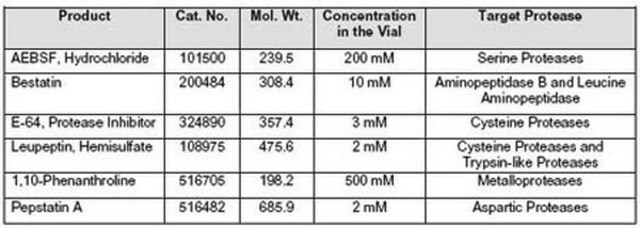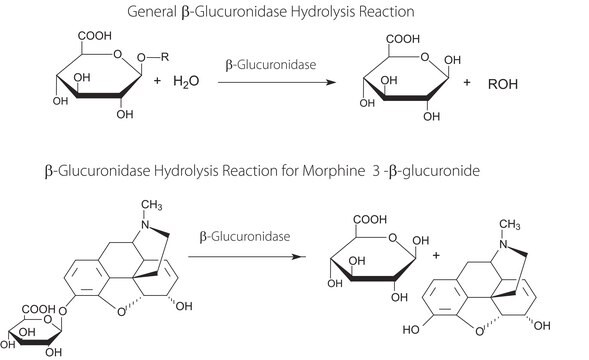539136
Protease Inhibitor Cocktail Set IV
The Protease Inhibitor Cocktail Set IV controls the activity of Protease. This small molecule/inhibitor is primarily used for Protease Inhibitors applications.
Synonyme(s) :
Protease inhibitor cocktail
About This Item
Produits recommandés
Forme
liquid
Fabricant/nom de marque
Calbiochem®
Conditions de stockage
OK to freeze
Conditions d'expédition
wet ice
Température de stockage
−20°C
Catégories apparentées
Description générale
Spécificité
Application
Actions biochimiques/physiologiques
aspartic-, cysteine-, metallo-, and serine-proteases
Avertissement
Forme physique
Reconstitution
Autres remarques
Informations légales
Mention d'avertissement
Warning
Mentions de danger
Conseils de prudence
Classification des risques
Acute Tox. 4 Oral - Aquatic Acute 1 - Aquatic Chronic 1 - Eye Irrit. 2 - Skin Irrit. 2
Code de la classe de stockage
10 - Combustible liquids
Classe de danger pour l'eau (WGK)
WGK 3
Point d'éclair (°F)
188.6 °F - Information refers to the main ingredient.
Point d'éclair (°C)
87 °C - Information refers to the main ingredient.
Certificats d'analyse (COA)
Recherchez un Certificats d'analyse (COA) en saisissant le numéro de lot du produit. Les numéros de lot figurent sur l'étiquette du produit après les mots "Lot" ou "Batch".
Déjà en possession de ce produit ?
Retrouvez la documentation relative aux produits que vous avez récemment achetés dans la Bibliothèque de documents.
Les clients ont également consulté
Notre équipe de scientifiques dispose d'une expérience dans tous les secteurs de la recherche, notamment en sciences de la vie, science des matériaux, synthèse chimique, chromatographie, analyse et dans de nombreux autres domaines..
Contacter notre Service technique











